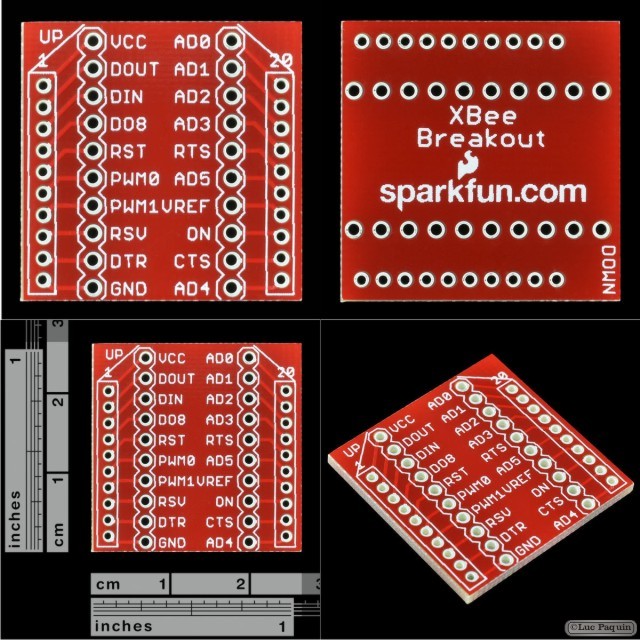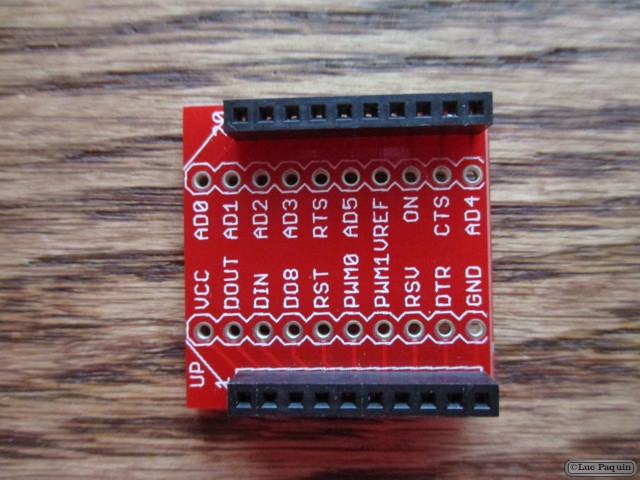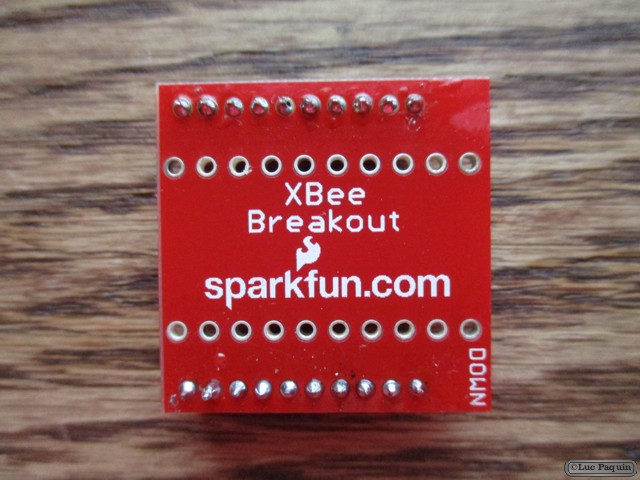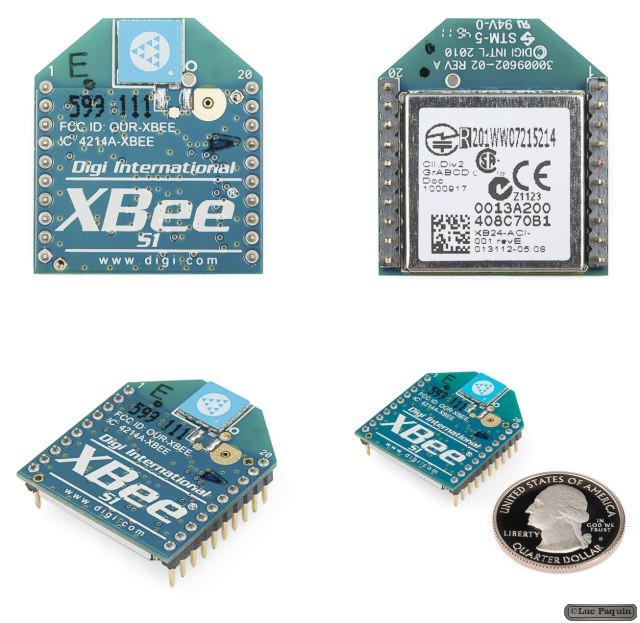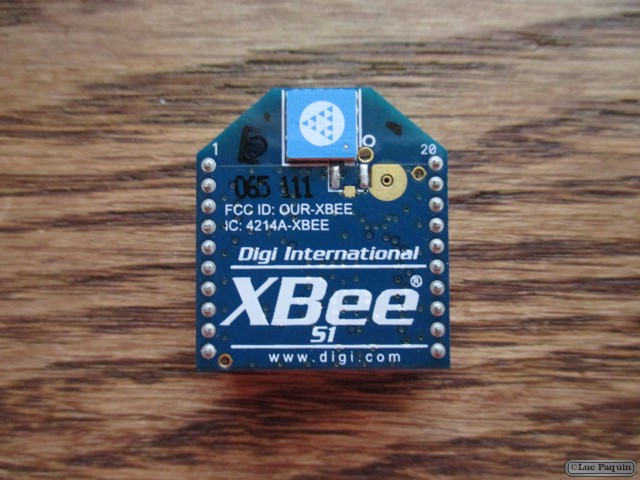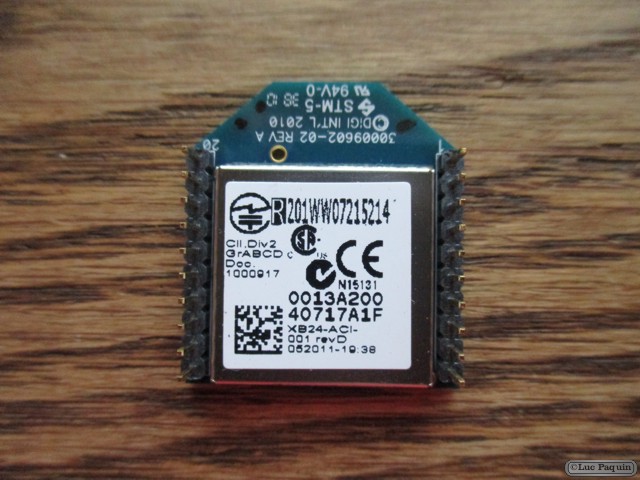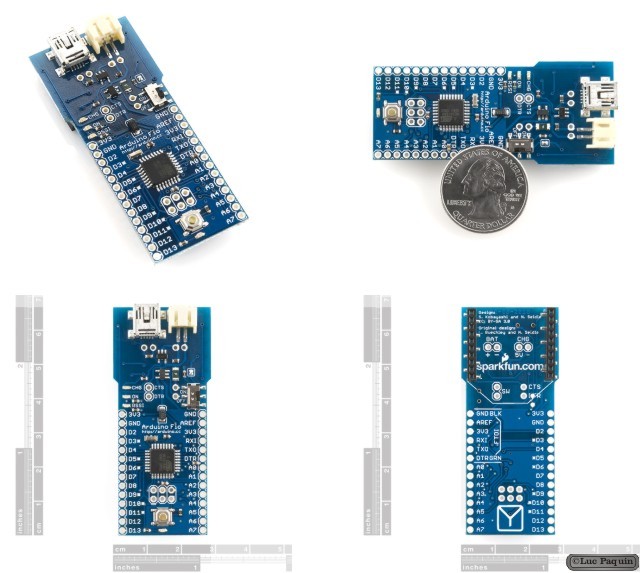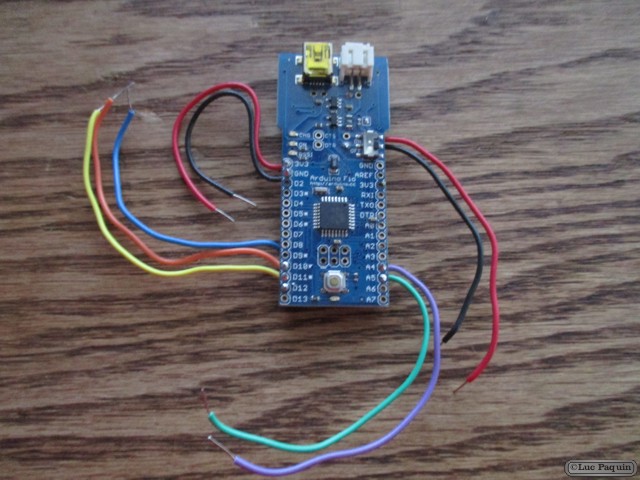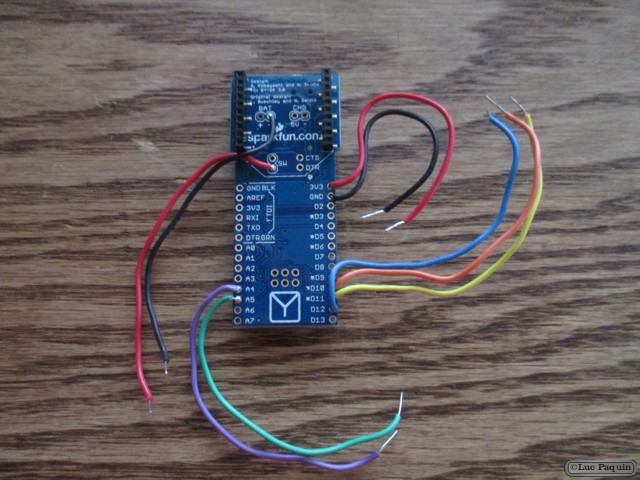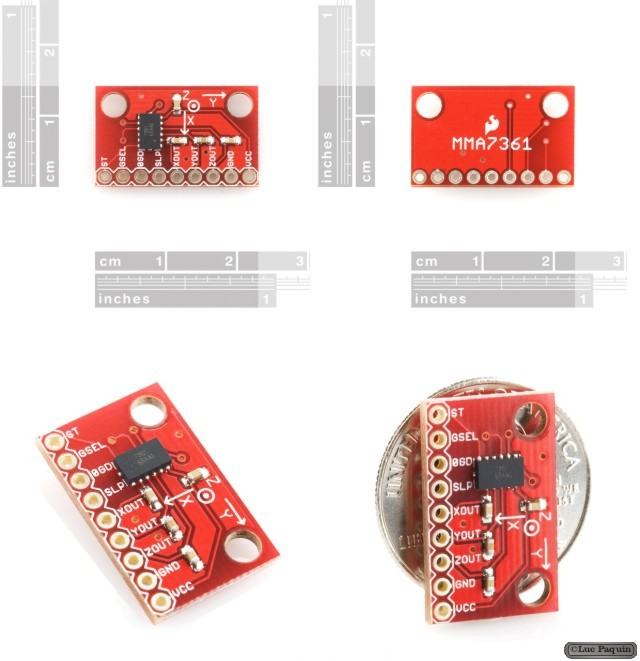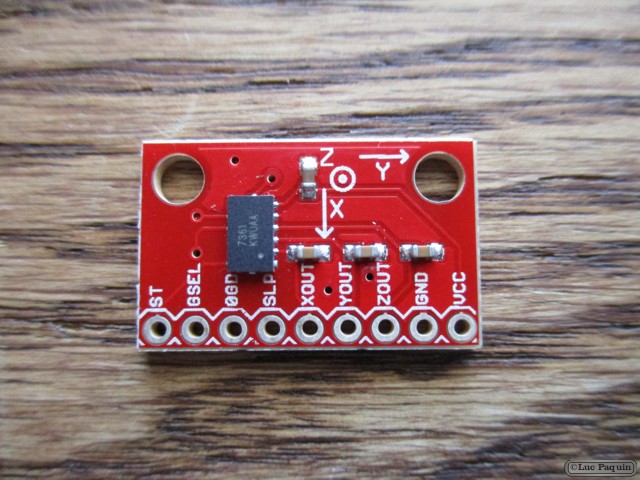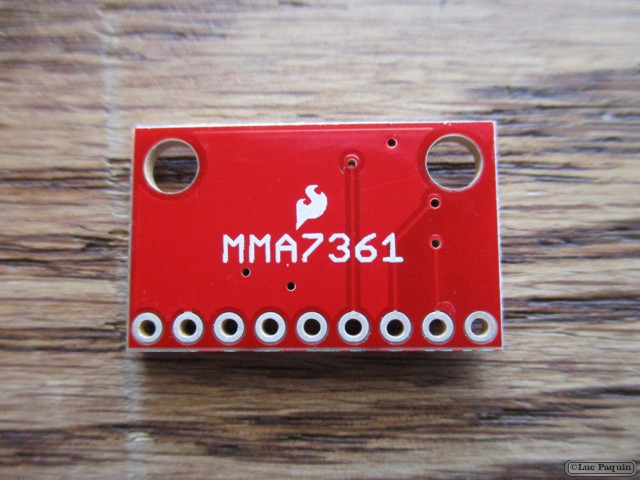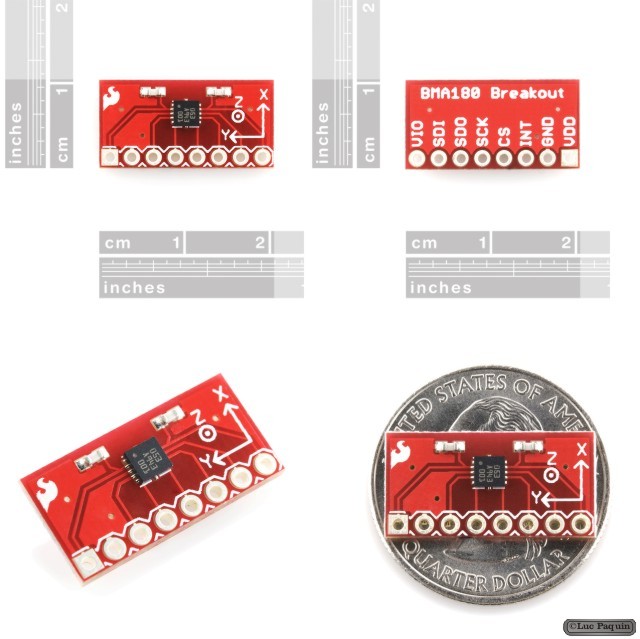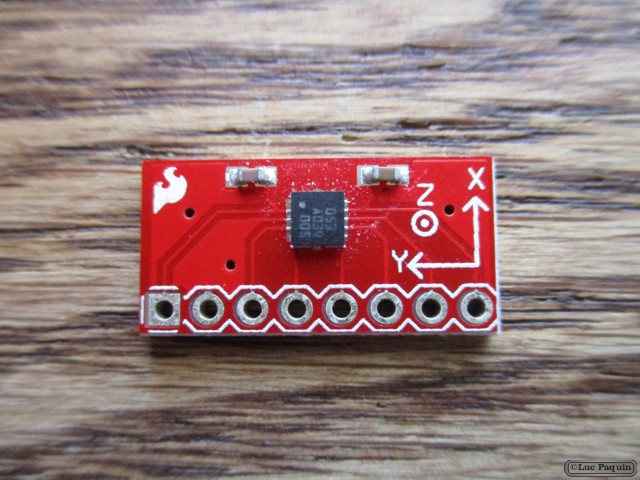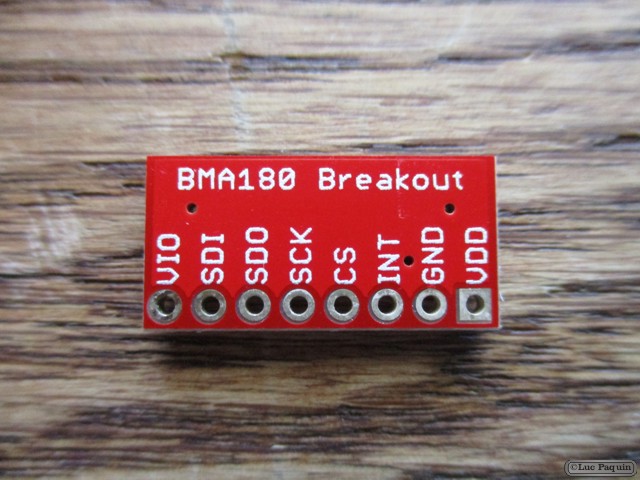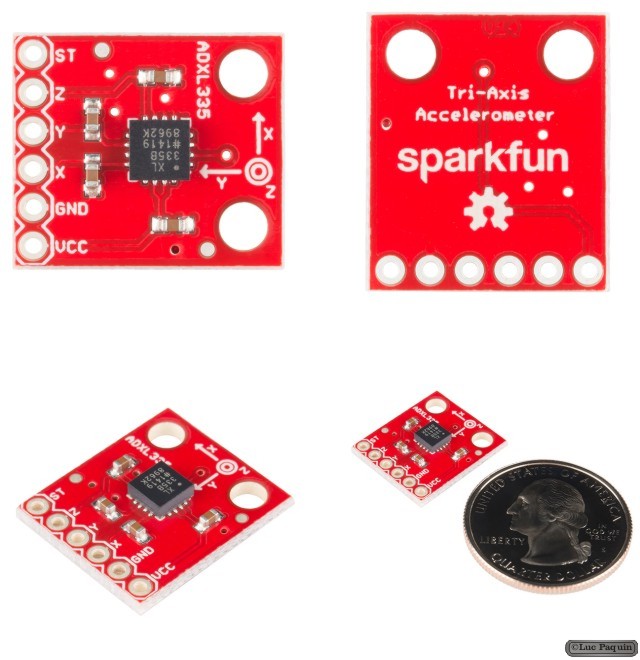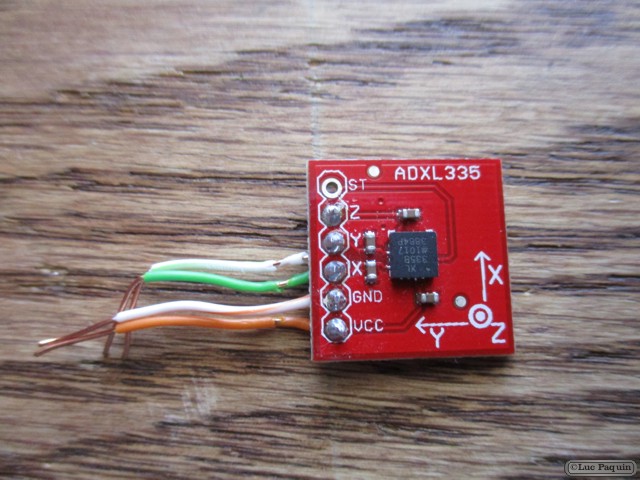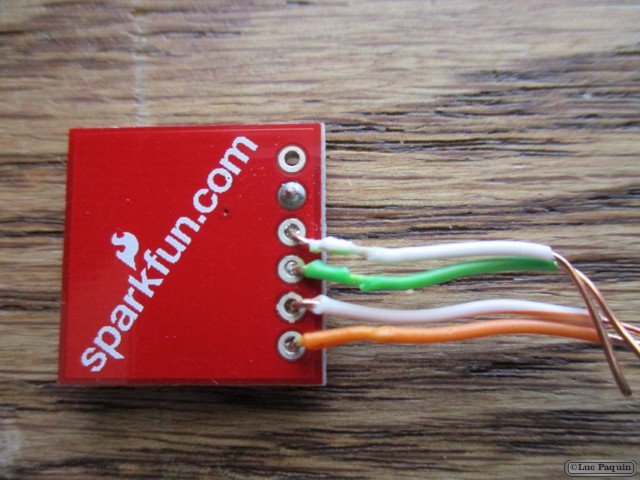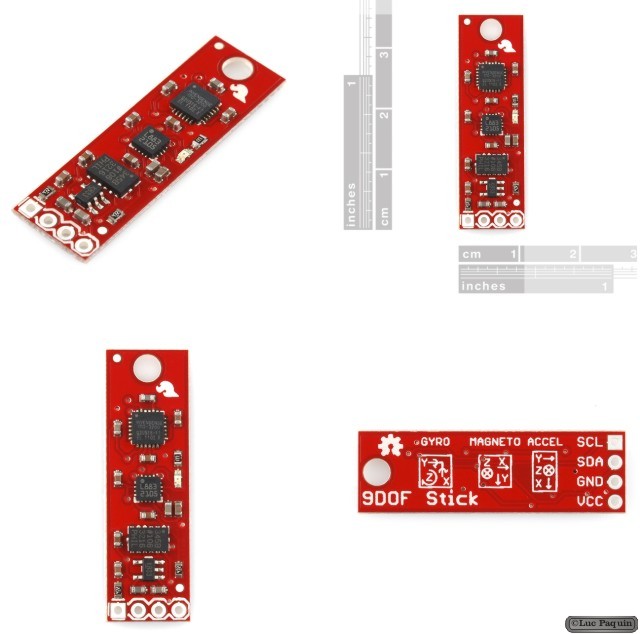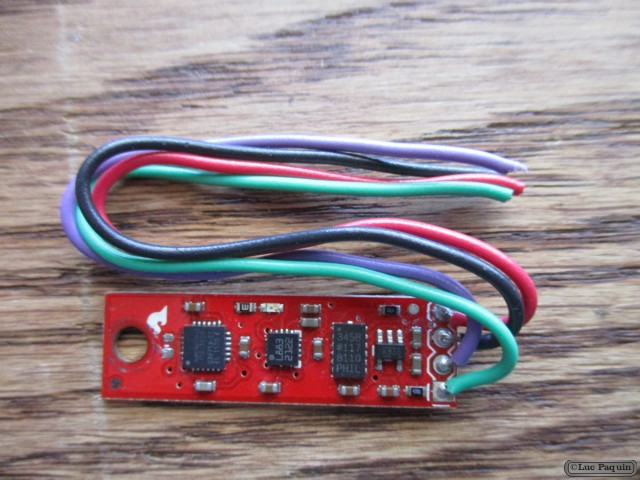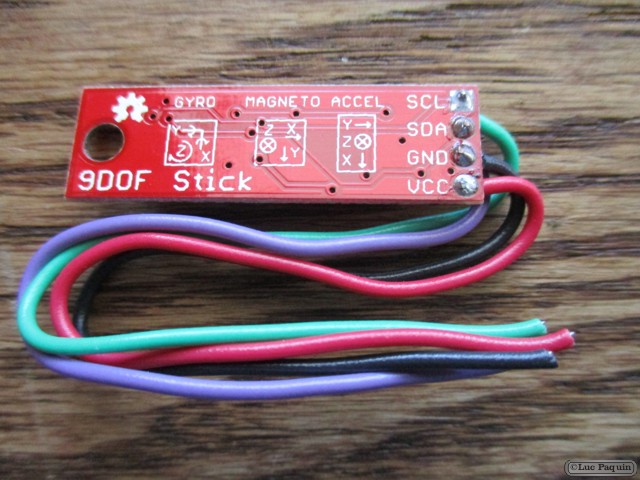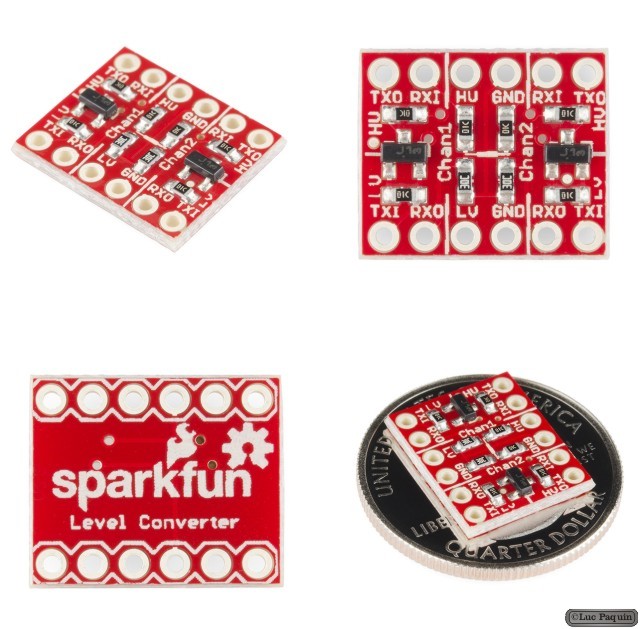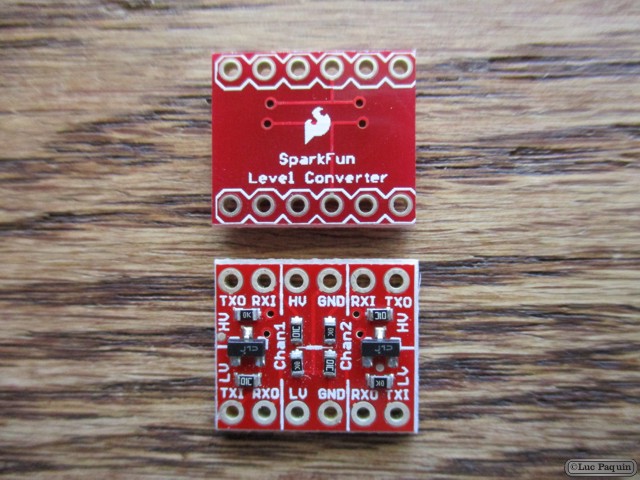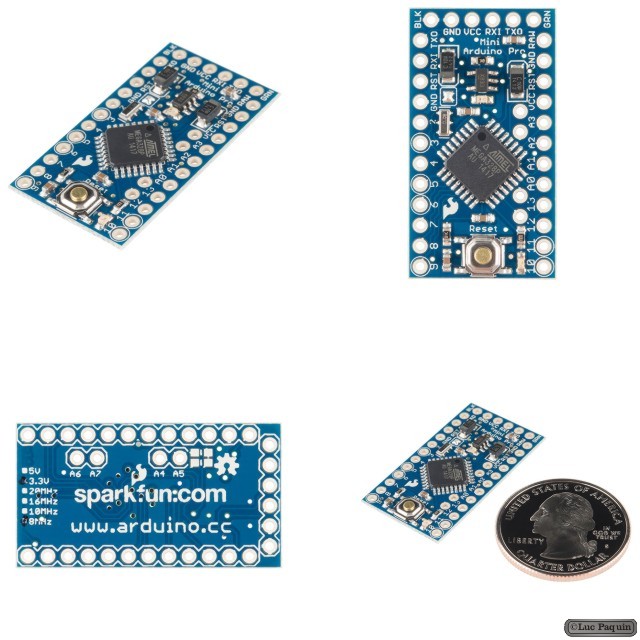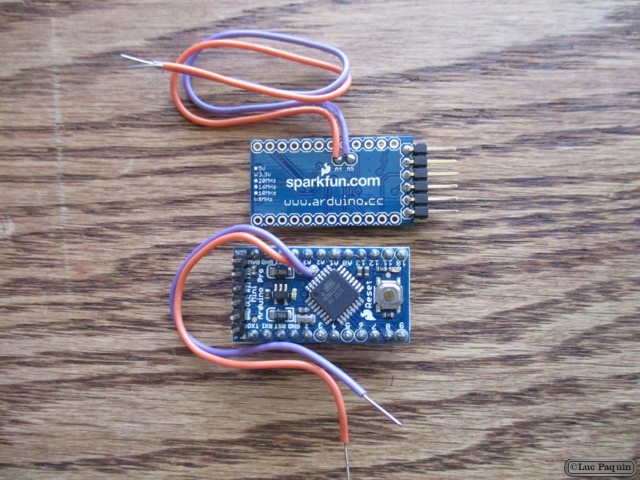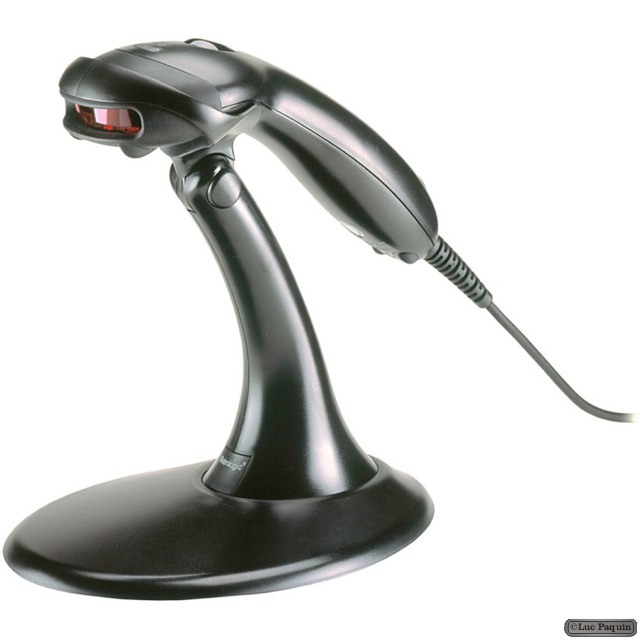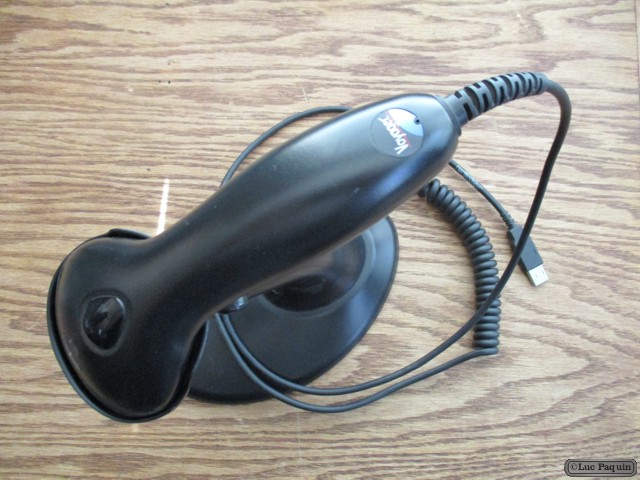SparkFun – Breakout Board for XBee Module
SparkFun: BOB-08276
Description: This is a simple breakout board for the popular XBee product from Digi. This board breaks out all 20 pins of the XBee to a 0.1″ standard spacing dual row header. The spacing between 0.1″ headers is 0.5″ making it breadboard DIP friendly. We highly recommend using the female sockets to avoid having to solder the XBee permanently to the breakout board. This is the PCB only. Please order the accompanying 2mm sockets (you’ll need 2!) and 0.1″ headers below.
Don Luc
SparkFun – XBee 1mW Chip Antenna – Series 1 (802.15.4)
SparkFun: WRL-08664
Description: This is the very popular 2.4GHz XBee module from Digi. These modules take the 802.15.4 stack (the basis for Zigbee) and wrap it into a simple to use serial command set. These modules allow a very reliable and simple communication between microcontrollers, computers, systems, really anything with a serial port! Point to point and multi-point networks are supported.
Features:
- 3.3V @ 50mA
- 250kbps Max data rate
- 1mW output (+0dBm)
- 300ft (100m) range
- Built-in antenna
- Fully FCC certified
- 6 10-bit ADC input pins
- 8 digital IO pins
- 128-bit encryption
- Local or over-air configuration
- AT or API command set
Don Luc
SparkFun – Arduino Fio
SparkFun: DEV-10116
Description: The Arduino Funnel I/O (Fio) is a board designed by Shigeru Kobayashi, based on the original design from LilyPad.
Funnel is a toolkit to sketch your idea physically, and consists of software libraries and hardware. By using Funnel, the user can interface to sensors and/or actuators with various programming languages such as ActionScript 3, Processing, and Ruby.
Arduino Fio is compatible with Funnel. It has connections for a Lithium Polymer battery and includes a charge circuit over USB. An XBee socket is available on the bottom of the board. The Fio has been designed to be wirelessly reprogrammable. Checkout our tutorial on wireless bootloading!
Note: The miniUSB connector is used for battery charging only. To bootload new firmware, you will need an external serial connection over an FTDI Basic, FTDI cable, or other serial connection. Check the related products below.
Note: The XBee socket and FTDI connection live on the same TX/RX pins of the ATmega328. You will need to remove the XBee module while reprogramming over serial. We recommend using a wireless bootloader whenever possible to avoid this step.
Note: A portion of this sale is given back to Arduino LLC to help fund continued development of new tools and new IDE features.
Features:
- ATmega328V running at 8MHz
- Arduino Bootloader
- XBee socket
- Lithium Polymer battery compatible
- MCP73831T LiPo Charger
- Reset button
- On/Off Switch
- Status/Charge/RSSI LEDs
Don Luc
SparkFun – Triple Axis Accelerometer Breakout – MMA7361
SparkFun: SEN-09652
Description: This is a breakout board for Freescale’s MMA7361L three-axis analog MEMS accelerometer. The sensor requires a very low amount of power and has a g-select input which switches the accelerometer between ±1.5g and ±6g measurement ranges. Other features include a sleep mode, signal conditioning, a 1-pole low pass filter, temperature compensation, self test, and 0g-detect which detects linear freefall. Zero-g offset and sensitivity are factory set and require no external devices.
This breadboard friendly board breaks out every pin of the MMA7361L to a 9-pin, 0.1″ pitch header. The sensor works on power between 2.2 and 3.6VDC (3.3V optimal), and typically consumes just 400µA of current. All three axes have their own analog output.
Features:
- Two selectable measuring ranges (±1.5g, ±6g)
- Breadboard friendly – 0.1″ pitch header
- Low current consumption: 400 µA
- Sleep mode: 3 µA
- Low voltage operation: 2.2 V – 3.6 V
- High sensitivity (800 mV/g at 1.5g)
- Fast turn on time (0.5 ms enable response time)
- Self test for freefall detect diagnosis
- 0g-Detect for freefall protection
- Signal conditioning with low pass filter
- Robust design, high shocks survivability
Dimensions: 0.90 x 0.50″
Don Luc
SparkFun – Triple Axis Accelerometer Breakout – BMA180
SparkFun: SEN-09723
Description: This is a breakout board for Bosch’s BMA180 three-axis, ultra-high performance digital accelerometer. The BMA180 provides a digital 14-bit output signal via a 4-wire SPI or I2C interface. The full-scale measurement range can be set to ±1g, 1.5g, 2g, 3g, 4g, 8g or 16g. Other features include programmable wake-up, low-g and high-g detection, tap sensing, slope detection, and self-test capability. The sensor also has two operating modes: low-noise and low-power.
This breadboard friendly board breaks out every pin of the BMA180 to an 8-pin, 0.1″ pitch header. The board doesn’t have any on-board regulation, so the provided voltage should be between 1.62 and 3.6V for VDD and 1.2 to 3.6V for VDDIO. The sensor will typically only consume 650uA in standard mode.
Features:
- Wide variety of measurment ranges (±1g, 1.5g, 2g, 3g, 4g, 8g and 16g)
- 14- or 12-bit ADC conversion
- 2 selectable I2C addresses
- Programmable integrated digital filters (no external components necessary)
- 8 low-pass filters
- 1 high-pass filter
- 1 band-pass filter
- Programmable interrupt features:
- Wake-up
- Low-g detection
- High-g detection
- Tap sensing
- Slope detection
- 2 main standard modes: low-noise and low-power
- Sleep mode
- Wake-up mode
- Self-test capability
Dimensions: 0.80 x 0.40″
Don Luc
SparkFun – Triple Axis Accelerometer Breakout – ADXL335
SparkFun: SEN-09269
Description: Breakout board for the 3 axis ADXL335 from Analog Devices. This is the latest in a long, proven line of analog sensors – the holy grail of accelerometers. The ADXL335 is a triple axis MEMS accelerometer with extremely low noise and power consumption – only 320uA! The sensor has a full sensing range of +/-3g.
There is no on-board regulation, provided power should be between 1.8 and 3.6VDC.
Board comes fully assembled and tested with external components installed. The included 0.1uF capacitors set the bandwidth of each axis to 50Hz.
Dimensions: 0.7×0.7″
Don Luc
SparkFun – 9 Degrees of Freedom – Sensor Stick
SparkFun: SEN-10724
Description: The SparkFun 9DOF Sensor Stick is a very small sensor board with 9 degrees of freedom. It includes the ADXL345 accelerometer, the HMC5883L magnetometer, and the ITG-3200 MEMS gyro. The ‘stick’ has a simple I2C interface and a mounting hole for attaching it to your project. Also, the board is a mere 0.036″ thick (0.093″ overall), allowing it to be easily mounted in just about any application.
Dimensions: 1.37×0.42″
Don Luc
SparkFun – Logic Level Converter
SparkFun: BOB-11978
Description: If you’ve ever tried to connect a 3.3V device to a 5V system, you know what a challenge it can be. The SparkFun logic level converter is a small device that safely steps down either 5V signals to 3.3V or steps up 3.3V to 5V. This level converter also works with 2.8V and 1.8V devices. Each level converter has the capability of converting 4 pins on the high side to 4 pins on the low side with two inputs and two outputs provided for each side.
The level converter is very easy to use. The board needs to be powered from the two voltages sources (high voltage and low voltage) that your system is using. High voltage (5V for example) to the ‘HV’ pin, low voltage (2.8V for example) to ‘LV’, and ground from the system to the ‘GND’ pin.
This revision of the Logic Level Converter fixes the issue with the board not stepping down from 5V to 3.3V correctly.
Dimensions: 0.5×0.6″
Don Luc
SparkFun – Arduino Pro Mini 328 – 3.3V/8MHz
SparkFun: DEV-11114
Description: It’s blue! It’s thin! It’s the Arduino Pro Mini! SparkFun’s minimal design approach to Arduino. This is a 3.3V Arduino running the 8MHz bootloader. Arduino Pro Mini does not come with connectors populated so that you can solder in any connector or wire with any orientation you need. We recommend first time Arduino users start with the Uno R3. It’s a great board that will get you up and running quickly. The Arduino Pro series is meant for users that understand the limitations of system voltage (3.3V), lack of connectors, and USB off board.
We really wanted to minimize the cost of an Arduino. In order to accomplish this we used all SMD components, made it two layer, etc. This board connects directly to the FTDI Basic Breakout board and supports auto-reset. The Arduino Pro Mini also works with the FTDI cable but the FTDI cable does not bring out the DTR pin so the auto-reset feature will not work. There is a voltage regulator on board so it can accept voltage up to 12VDC. If you’re supplying unregulated power to the board, be sure to connect to the “RAW” pin on not VCC.
The latest and greatest version of this board breaks out the ADC6 and ADC7 pins as well as adds footprints for optional I2C pull-up resistors! We also took the opportunity to slap it with the OSHW logo.
Dimensions: 0.7×1.3″ (18x33mm)
Features:
- ATmega328 running at 8MHz with external resonator (0.5% tolerance)
- Low-voltage board needs no interfacing circuitry to popular 3.3V devices and modules (GPS, accelerometers, sensors, etc)
- 0.8mm Thin PCB
- USB connection off board
- Weighs less than 2 grams!
- Supports auto-reset
- 3.3V regulator
- Max 150mA output
- Over current protected
- DC input 3.3V up to 12V
- On board Power and Status LEDs
- Analog Pins: 8
- Digital I/Os: 14
Don Luc
Metrologic – Voyager MS9540 Single-Line Laser Scanner
Metrologic Voyager MS9540
VoyagerCG® MS9540 hand-held, single-line laser scanners feature patented automatic infrared activation and can decode all standard 1D barcodes, including GS1 DataBar. The VoyagerCG hand-held barcode scanner also includes CodeGate® technology for menu scanning applications. CodeGate zeroes in on the desired code and completes barcode data transmission with the push of a single button.
Voyager MS9540 Single-Line Laser Scanner Features and Benefits
Automatic Trigger: Use scanner as either a hand-held device or a fixed presentation scanner when mounted in the stand.
650-nanometer laser: High-visibility laser allows user to place laser line on selected bar code.
CodeGate: Zero in on desired code and complete data transmission with the push of a single button ideal for menu scanning applications.
Flash ROM: Future proof POS system with free firmware updates via MetroSet®2 software and standard PC.
Parsing (Data Editing): Format bar code data to meet host system’s specific requirements.
Don Luc
